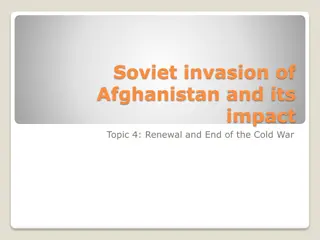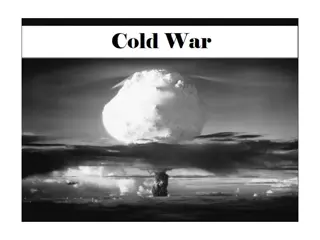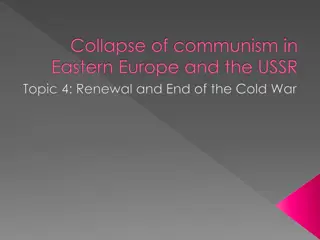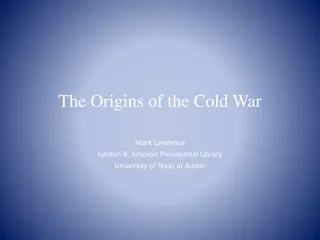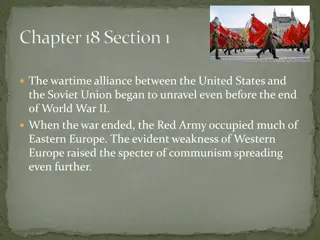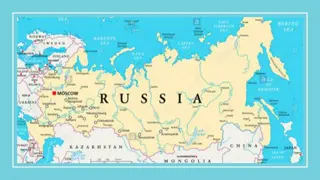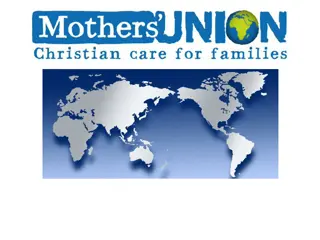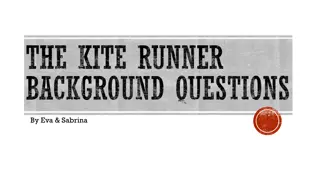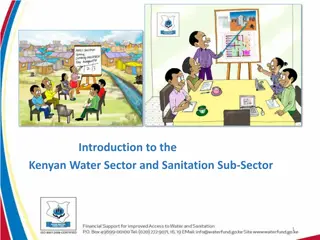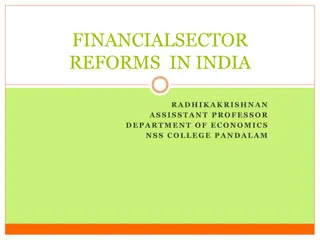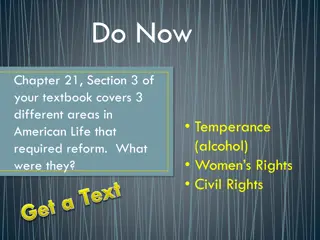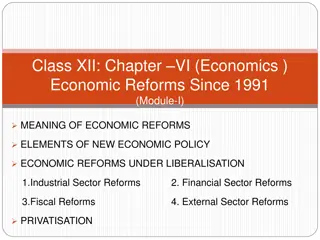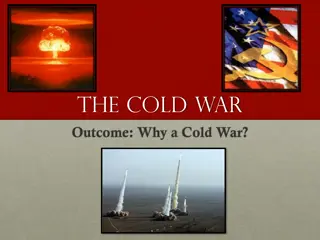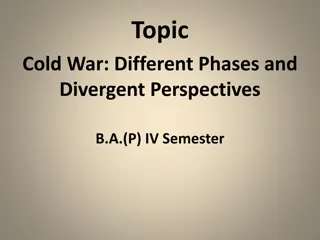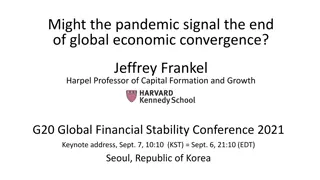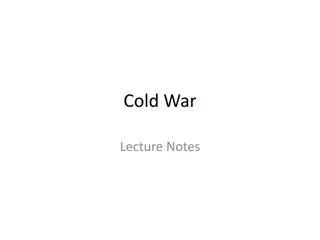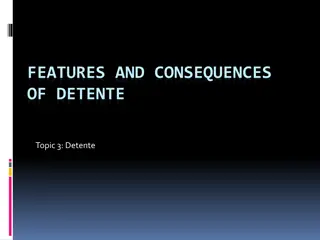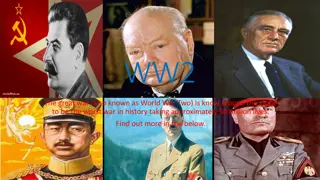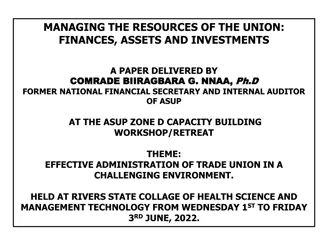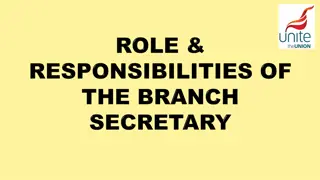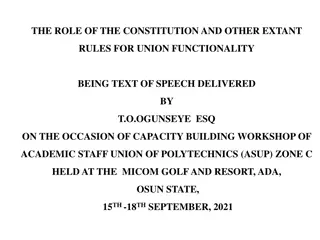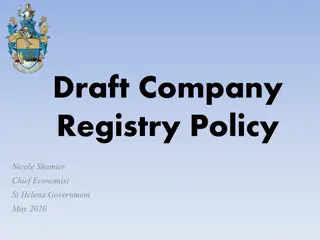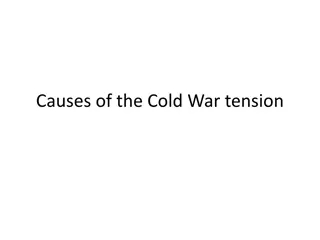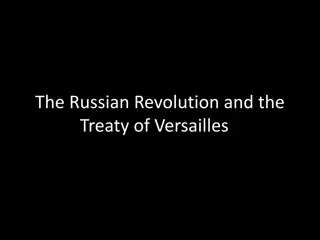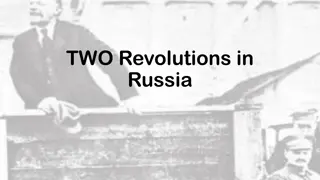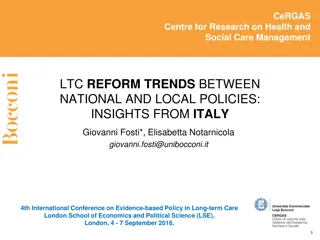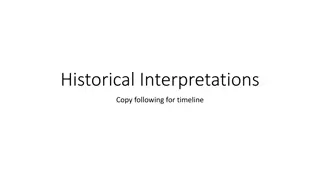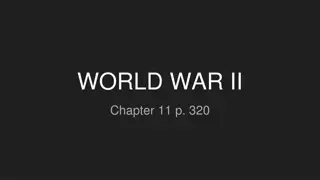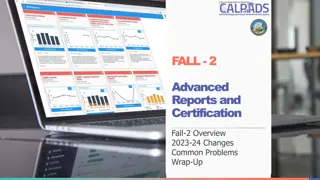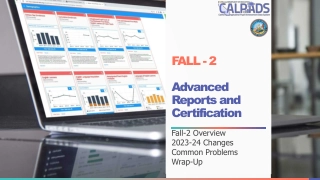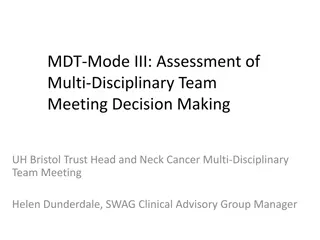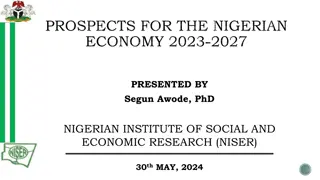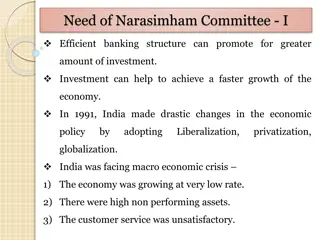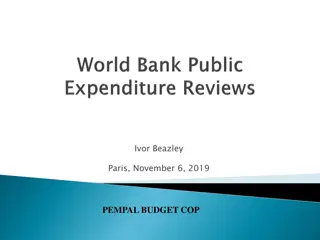The Fall of the Soviet Union: Gorbachev's Reforms and Global Impact
In the late 20th century, the collapse of the Soviet Union under Gorbachev's leadership ushered in a new era of economic, political, and social change. Gorbachev's policies of glasnost and perestroika opened up Soviet society, leading to nationalist movements and ultimately the dissolution of the USSR. This period also saw the rise of the European Union, increased globalization, and the impact of new inventions on European life. The Soviet Union's collapse was influenced by factors such as defense policies, ethnic tensions, and lack of technological innovation. The aftermath brought about major political developments in Eastern Europe, Western Europe, and North America.
Download Presentation

Please find below an Image/Link to download the presentation.
The content on the website is provided AS IS for your information and personal use only. It may not be sold, licensed, or shared on other websites without obtaining consent from the author. Download presentation by click this link. If you encounter any issues during the download, it is possible that the publisher has removed the file from their server.
E N D
Presentation Transcript
Ch. 30 After the Fall: The Western World in a Global Age (since 1985)
AP Thematic Questions How were Gorbachev s glasnost and perestroika intended to stave off the collapse of the USSR? 1. How did the economic problems of the USSR combine with nationalism and economic troubles to bring about the collapse of communism in Eastern Europe and the Soviet Union? 2. In what ways did new inventions change the lives of Europeans? 3. In what ways did nationalism and ethnic conflict continue to disrupt the peace achieved after World War II? How have the European nations dealt with this issue? 4. How did the European Union form, and what effects did it have the economy of Europe? How have European society and the European economy become more globalized? 5. Why did Europeans allow guest workers to immigrate to their counties? What effect did they have on politcis, economy and society? 6.
FQ: What reforms did Gorbachev institute in the Soviet Union, and what role did he play in the demise of the Soviet Union? What are the major political developments in Eastern Europe, Western Europe, and North America since 1985?
The Gorbachev Era perestroika restructuring. A term applied to Gorbachev s economic, political and social reforms. glasnost openness. Mikhail Gorbachev s policy of encouraging Soviet citizens to openly discuss the strengths and weaknesses of the Soviet Union. Ethnic groups took advantage of the new openness to protest what they viewed as unjust rule leading to nationalist movements for independence in Georgia, Latvia, Uzbekistan, Azerbaijan and Lithuania.
The End of the Soviet Union Conservative leaders of the traditional Soviet institutions the army, government, KGB, and military industries began to worry about the collapse of the USSR and the potential loss to their own fortunes. 1991 Conservative rightists failed to overthrow Gorbachev. However, they did unintentionally speed up the break up of the USSR. Dec. 1, 1991 Ukraine voted for independence and a week later the leaders of Russia, Ukraine, and Belarus announced that the Soviet Union had ceased to exist .
Why did the Soviet Union Collapse? Defense policies adopted by the Reagan administration? Lack of investment in new technologies prevented innovation and development of new consumer goods. Multiethnic character only a little more than half of the total population made up of ethnic Russians. Minority nationalities demanded more autonomy.
The New Russia Yeltzin wanted to implement reforms that would set Russia on a firm course toward a pluralistic political system and a market economy. Growing economic inequality and corruption caused Russians to question the new capitalist system. War in Chechnya Muslims of Chechnya wanted national independence from Russia .
The Putin Era Former member of the KGB vowed to strengthen the role of the central government in managing the affairs of the state. President from 2001-2008. Prime Minister from 2008-2012. Re- elected as president in 2012-present. Censors the media and cracks down on his critics with violence. Protests erupted in Ukraine leading to the annexation of Crimea in 2014.
Eastern Europe: The Revolutions of 1989 and the Collapse of the Communist Order Discontent with the Soviet-style regimes grew within satellite states. Revolutions of 1989 brought the Communist regimes down once it became clear that Gorbachev would not use the military to intervene.
The Fall 1988 demonstrations led to the first free election in Eastern Europe in forty years. Hungary formed a new coalition government that committed Hungary to democratic government. Revolution in Czechoslovakia was less violent than in Romania.
After the Fall New governments introduced democratic procedures and market systems. Challenges included inexperience with democratic systems, ethnic divisions and poor investment in new technologies. 1997 Poland, Czech Republic, and Hungary joined NATO.
The Reunification of Germany Poor economic conditions and oppressive policies of the regime of Erich Honecker led to refugees fleeing East Germany and mass demonstrations. 1989 Berlin Wall came down. Negotiations between East and West Germany as well as the original four postwar occupying powers (U.S., Great Britain, France and the Soviet Union) led to political reunification in 1990.


